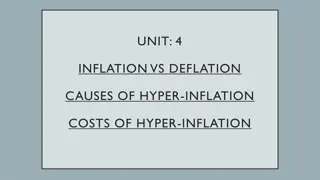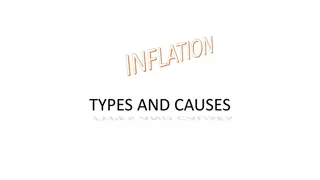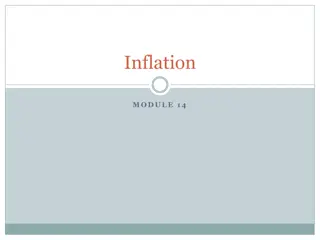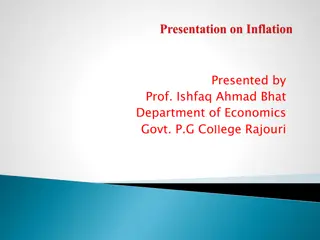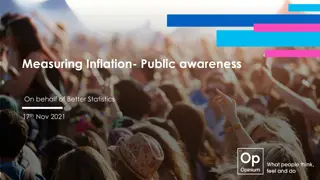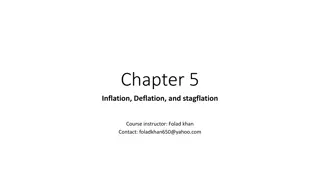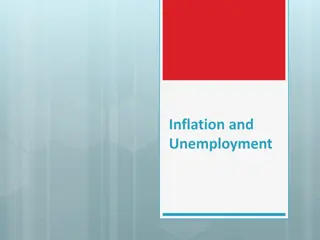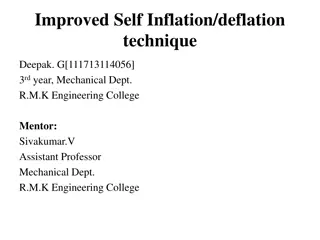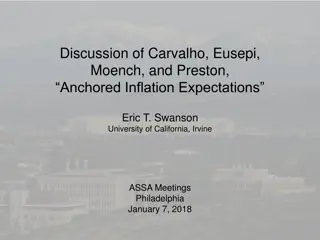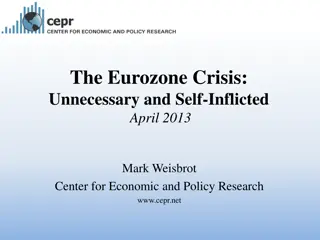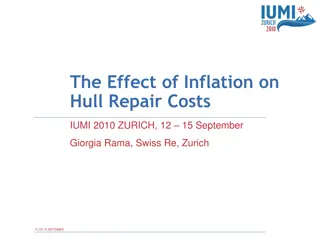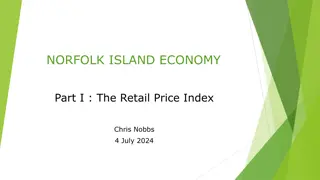Understanding the Cost of Living Crisis and Inflation Impact
The cost of living crisis has intensified due to soaring energy costs, impacting inflation and living standards. Individuals experience varying levels of inflation based on income and spending habits, with earnings significantly influencing their ability to meet expenses. Insights into earnings distribution in Northern Ireland shed light on the challenges faced by different segments of the population amidst the current economic climate.
Download Presentation

Please find below an Image/Link to download the presentation.
The content on the website is provided AS IS for your information and personal use only. It may not be sold, licensed, or shared on other websites without obtaining consent from the author. Download presentation by click this link. If you encounter any issues during the download, it is possible that the publisher has removed the file from their server.
E N D
Presentation Transcript
The Cost of Living Crisis: A generation in the making Dr Lisa Wilson 31st January 2023 Twitter: Twitter: @lisawilson_NERI Website: Website: www.nerinstitute.net
Overview The current cost of living crisis & inflation Living standards Earnings Benefits Social wage
The current crisis Inflation The current crisis is being referred to as the cost-of-living crisis. Very suddenly the cost of energy, something that very few households or businesses can live without, went through the roof. Inflation had been building for months preceding Ukraine crisis, but this was expected given the speed at which economic activity returned post-pandemic. Energy costs since March have changed game completely. No short-term policy measures could have avoided.
Inflation for households The rate of inflation that people actually experience varies based on individual circumstances. It matters what your income is. Price increases take a bigger share of lower incomes. It matters how much you spend and what you buy. People who spend great proportion of income on food and energy take a bigger hit. Inflation, by necessity an average. Averages can conceal very different experiences at top and bottom.
The income which most people have to meet their cost of living derives from that which they earn from work
So, How much do we earn? Hourly pay excluding overtime 13.39 13.99 12.82 14.79 10.68 14.5 10.66 15.17 10.68 Weekly pay Annual pay 497.8 554.2 437.3 591.6 217.3 600 199.4 574.9 223.8 25,293 28,648 22,095 30,000 11,958 31,253 11,320 28,052 12,000 All Male Female Full-time Part-time Male Full-time Male Part-time Female Full-time Female Part-time Source: NISRA (2022) ASHE, Hourly pay excluding overtime
Distribution of earnings in Northern Ireland, 2022 30.00 27.02 25.00 21.98 9.50 National Living Wage 9.50 National Living Wage 9.90 Real Living Wage 9.90 Real Living Wage 9.85 Two 9.85 Two- -thirds UK median thirds UK median 19.95 20.00 18.30 15.44 15.00 12.00 11.00 10.50 10.17 9.51 10.00 5.00 0.00 10th percentile 20th percentile 25th percentile 30th percentile 40th percentile 60th percentile 70th percentile 75th percentile 80th percentile 90th percentile Source: NISRA (2022) ASHE, Hourly Median earnings excluding overtime NI, 2022
This past year has seen one of the sharpest decline in real earnings ..
Nominal and Real Wages, 2021-2022 8 6 4 2 0 % -2 -4 -6 -8 All Male Female Full-time Part-time Male Full-time Female Full-time Female Part-time Percentage change in nominal earnings Percentage change in real earnings Source: NISRA (2022) ASHE, Gross weekly earnings NI, 2022. ONS, CPI inflation.
This years data is comparing earnings change against a furlough year .
There werent any furloughed workers in April 2022, there were in April 2021. This means that we are comparing pay in a non-furlough year to a furlough year, which will be having a positive effect on measured pay growth as workers returned to work. Means that the actual squeeze on real pay underway in April is likely to be worse than what the data show.
Nominal and Real Wages, 2019-2022 25 20 15 10 % 5 0 -5 -10 All Male Female Full-time Part-time Male Full-time Female Full-time Female Part-time Percentage change in nominal earnings Percentage change in real earnings Source: NISRA (2022) ASHE, Gross weekly earnings NI, 2022. ONS, CPI inflation.
2021 was a good year for pay, 2022 was not & in 5 of the last 10 years workers earnings have not kept apace with the cost of living .
Nominal & Real Wage Changes 10.0 8.0 6.0 4.0 2.0 % 0.0 -2.0 -4.0 -6.0 -8.0 2002 2003 2004 2005 2006 2007 2008 2009 2010 2011 2012 2013 2014 2015 2016 2017 2018 2019 2020 2021 2022 Percentage change in nominal earnings Percentage change in real earnings Source: NISRA (2022) ASHE, Gross weekly earnings NI, 2022. ONS, CPI inflation.
Public sector employees working full-time have seen no progression in their earnings in 20 years .
20 15 10 y/y change in real earnings 5 0 -5 -10 -15 2002 2003 2004 2005 2006 2007 2008 2009 2010 2011 2012 2013 2014 2015 2016 2017 2018 2019 2020 2021 r 2022 p All public sector Full-time public sector Part-time public sector
Private sector earnings have never recovered from the financial crisis
15 10 5 y/y change in real earnings 0 2002 2003 2004 2005 2006 2007 2008 2009 2010 2011 2012 2013 2014 2015 2016 2017 2018 2019 2020 2021 r 2022 p -5 -10 -15 -20 All private sector Full-time private sector Part-time private sector
Another key component of income derives from the social security system ..
Benefits About 40% of those who receive universal credit are in work. Working age benefits frozen from 2016 for 4 years. Continuation of erosion of welfare system: 2 child limit, child benefit. Working age benefits are generally uprated every April in line with the previous September s CPI inflation figure. Working-age benefits will increase by 10.1% in April 2023. Even with this, we will have locked in a permanent real terms decline in working-age benefits.
Our living standards are not just determined by the income that we have, but by the resources that we have .
Social wage Patching up other issues which could be handled via the provision of services through the labour market & social security system. Examples of social wage include: childcare, transport, adult care, housing. We seem to almost attempt the opposite, patch up the lack of services.
The Cost of Living Crisis: A generation in the making Dr Lisa Wilson 31st January 2023 Twitter: Twitter: @lisawilson_NERI Website: Website: www.nerinstitute.net




